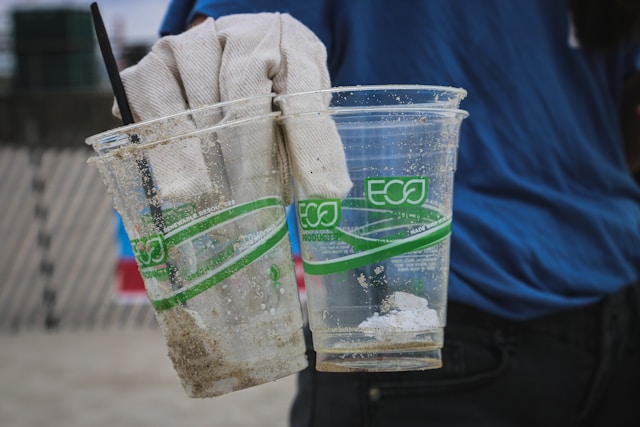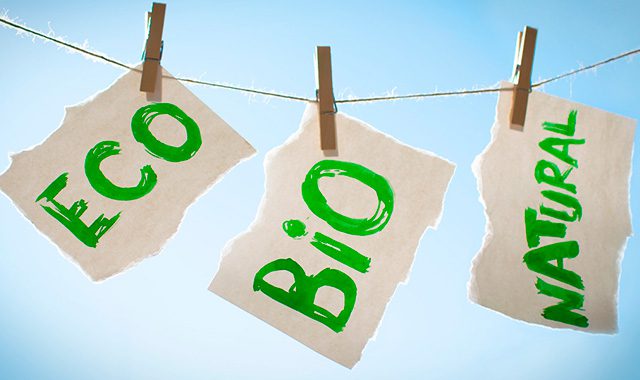
Eco-conscious consumerism isn’t just a trend—it’s a movement. A recent study by GreenPrint revealed that about 64% of American consumers are willing to pay a premium for sustainable products. The study also found that 78% of the people will likely buy a product labeled environmentally friendly.
Surprisingly, many consumers admit that they cannot identify an eco-friendly product. Some don’t believe in eco-claims. This begs the question, how can you, as a marketer or business owner, highlight your brand’s eco-conscious attributes without falling into the trap of greenwashing?
This post will guide you through developing and maintaining authentic, effective, and environmentally responsible marketing campaigns. Note that you might need help from legal experts in NJ to understand and comply with environmental regulations, specifically for green digital marketing in New Jersey.
Understanding greenwashing

Since consumers have become eco-conscious, marketers have been forced to adopt sustainable marketing efforts to meet consumer needs. While some are genuine about their eco-friendly claims, other marketers are simply taking advantage to please consumers and to sell their products, a practice known as greenwashing.
Greenwashing refers to a PR tactic companies or marketers use to falsely promote their products, services, or practices as environmentally friendly when in reality, they are not.
Common greenwashing practices include;
- Making vague claims: Using terms like “natural”, or “eco-friendly” without clear definitions or context.
- Partial disclosures: Selectively disclosing positive aspects of your operations while omitting less flattering information.
- Suggestive imagery: Using nature-centric imagery like images of wildlife, forests, or lush landscapes to evoke a sense of environmental consciousness.
- Irrelevant labels: Displaying labels or certifications that have no bearing on the product’s environmental impact.
How to avoid greenwashing in your marketing campaigns
Greenwashing is not only unethical but illegal. In fact, many jurisdictions have begun implementing and enforcing anti-greenwashing regulations to curb the practice.
So, how can you navigate sustainable marketing without running into the risk of greenwashing? Here are some tips.
Use transparent and specific language

“We are proud to be net-zero.”
“Our products are 100% eco-friendly.”
These are some of the buzzwords and clichés marketers practicing greenwashing use.
Do you expect consumers to believe you when you use these vague terms in your digital marketing? Unfortunately, some do. But it doesn’t change the fact that you’re greenwashing.
So, what’s the right way?
Use transparent and specific language that provides detailed information about your green initiatives.
Here’s how;
- Detail your initiatives: Instead of saying “We use eco-friendly materials,” specify the materials, such as “Our packaging is made from 100% recycled cardboard and biodegradable inks.”
- Quantify your impact: Use data and numbers to give context to your eco claims. For example, “We have minimized carbon emissions by over 40% over the last three years by switching to renewable energy sources.”
Being transparent and specific gives your audience clear, concrete information that builds trust and credibility. It also demonstrates your commitment to genuine sustainability.
Support your claims with evidence
If you make an environmental claim in your marketing, support the claim with data and evidence.
Here’s how to do it;
- Provide metrics and data: When making sustainability claims, share relevant data and statistics that support the claims. For example, “Between 2023 and 2024, our waste diversion program has redirected about 100 tons of material from landfills to recycling facilities.”
- Use visual evidence: Visual content such as videos, images, and infographics can make your sustainability efforts more tangible. Therefore, share photos of your sustainable production processes, behind-the-scenes footage of your recycling initiatives, or infographics that illustrate your impact.
Showing your work offers transparency and evidence that supports your marketing messages, making them more believable and trustworthy.
Have third-party verification
Third-party verification adds credibility and trust to your sustainability claims.
Consumers tend to trust third-party endorsements. This is because the endorsements prove that your products or services have been externally validated by non-biased organizations. They are proof that your business walks the talk and does not talk the talk.
Examples of reputable certifications include:
- LEED (Leadership in Energy and Environmental Design): This is for buildings and communities that meet high sustainability standards. A LEED certification demonstrates your commitment to water conservation, energy efficiency, and sustainable building practices.
- Energy Star: This certification is for products that meet stringent energy efficiency criteria set by the U.S. Environmental Protection Agency. Energy Star-certified products use less energy, minimize greenhouse gas emissions, and allow consumers to spend less money.
- Fair Trade: This certification ensures that products are made for people and the planet. Fair Trade products support safe working conditions, fair wages, and sustainable farming practices.
Certified products and practices can differentiate your brand in the marketplace, attracting eco-conscious consumers. Moreover, the certification process often involves rigorous assessments and improvements, leading to more efficient and sustainable operations.
Practice full-disclosure
It’s common for marketers to cherry-pick data and present a skewed image of their green efforts. By doing this, you’re only focusing on one side of the coin, which is greenwashing in marketing.
Therefore, instead of focusing only on the positives, it’s important to acknowledge your imperfections. This will enhance your credibility.
Here’s how to practice full-disclosure in your eco-friendly marketing;
- Admit your challenges: Sustainability is an ever-evolving field. So there’s no way you’ll claim you have everything figured out. Be upfront about the areas your business is still working to improve. You can use statements like “While we have made essential strides in minimizing our carbon footprint, we’re still working on finding more sustainable packaging solutions.”
- Share your plan: Outline the steps you’re taking to address your sustainability challenges. For instance, say, “We’re currently researching alternative materials and plan to implement a new packaging strategy by the end of the year.”
- Highlight ongoing efforts: Sustainability is a continuous journey. Communicate that you’re committed to ongoing improvement and regularly reassess your practices. For example, say “We conduct annual sustainability audits to discover new areas of improvement and set new goals.”
Educate and engage with consumers
Develop educational content in the form of videos, blogs, or images to raise awareness about green efforts. Offer practical tips for sustainable living.
Additionally, encourage your audience to take part in your green initiatives, such as community clean-up events or recycling programs. All these practices create a shared commitment to a sustainable future.
The importance of authentic eco-friendly marketing
So, why should you avoid greenwashing in your sustainability marketing efforts? Here are some benefits of authentic eco-friendly marketing;
Increased consumer and investor trust
Authentic marketing builds trust and loyalty among consumers. When customers believe in your brand’s genuine commitment to sustainability, they are more likely to support it consistently.
Moreover, more investors will be willing to invest in your business to support your green initiatives.
Increased brand awareness
A trustworthy brand leads to long-term benefits. Businesses known for their integrity and environmental responsibility often enjoy increased customer loyalty and positive word-of-mouth recommendations.
Environmental impact
Genuine sustainability efforts often contribute to real environmental benefits. By minimizing carbon footprints, reducing waste, and promoting responsible consumption, your business will make a significant positive impact on the planet.
Go green without Greenwashing
The success of green marketing lies in transparency, authenticity, and genuine commitment to responsible practices. Therefore, simply claiming you’re a planet-first business is not enough.
You need to show your audience how and what makes your business sustainable. Above all, avoid greenwashing—communicate clearly, back up your sustainability claims with data, educate your consumers, and get certifications.
This is the only right path to a green and responsible future.





